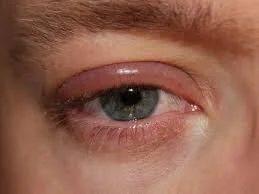Call 518-274-3390 or click below to schedule an appointment
Blepharitis
Blepharitis is “itis” or inflammation of the eyelids. It leads to symptoms of redness , swelling and pain of the eyelid margins , foreign body sensation, dry eyes , frequent styes, bumps or chalazia on the eyelids. Frequent associations are Rosacea, demodex infection, history of LASIK surgery, excessive computer use.
FAQ
-
Blepharitis is an eye condition characterized by eyelid inflammation. The part of the eye most affected by blepharitis is the baseline of the lash. It can affect just one or both eyes, and it’s common among people who have very oily skin or very dry eyes.
-
The symptoms of blepharitis are different for each person, but the most common signs of the condition are:
Watery eyes
Redness
Crusted eyelashes
Sticky eyelids
Loss of eyelashes
Blepharitis can also lead to swelling, frequent blinking, or abnormal eyelash growth. The symptoms may mimic those associated with allergies. Left untreated, scarring can occur on the eyelids, or they may turn inward or outward. While eye irritation is normal, especially if you wear makeup or have allergies, if your symptoms aren’t improving and you’re experiencing vision problems or pain, contact the Eye Health Center of Troy for a full eye exam.
-
Blepharitis can develop for a number of reasons. The most common causes include:
Bacterial infection: due to trapped dirt, grease, or makeup
Seborrheic dermatitis: itchy, flaky skin on the scalp or eyebrows
Allergic reactions: from makeup, eye medication, or contact lens solution
In some cases, blepharitis develops if you have eyelash mites or lice, or if you have rosacea.
-
There are several treatments available for blepharitis, and Dr. Kaw and her team can diagnose the cause of your condition to determine the best treatment option. In general, treatment for blepharitis involves eyelid scrubs, which help to remove the buildup of bacteria from your eyelids through a cleaning agent and exfoliation.
Dr. Kaw and her team might also recommend thermal pulsation treatment to melt and remove bacteria that’s trapped in your oil glands, and to help your eye’s natural oils to flow more freely. In other cases, you might need medicated eye drops or ointments to kill bacteria in the eyelids or around the eyes.
To learn more about blepharitis treatment, contact the Eye Health Center by calling or booking an appointment online.
